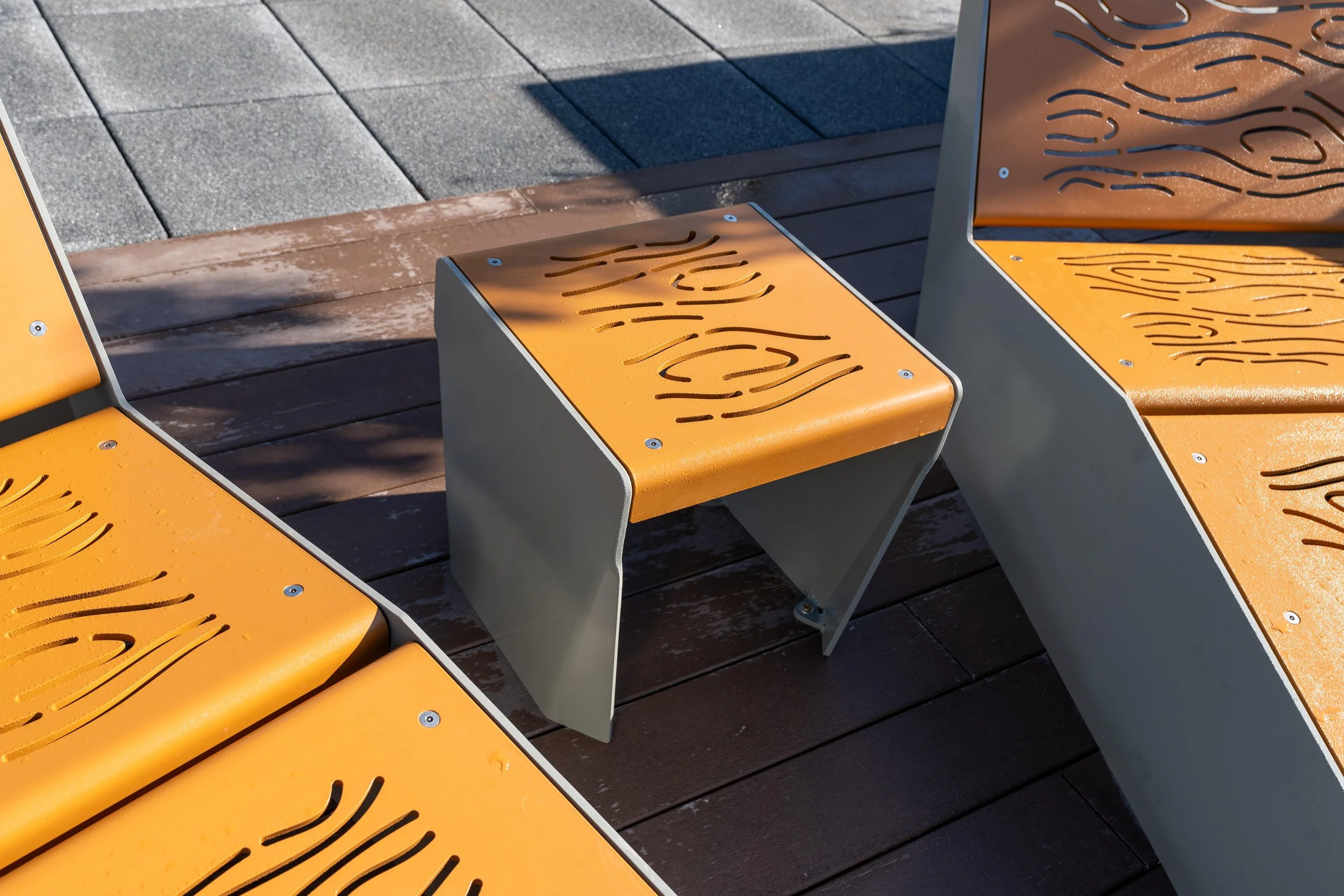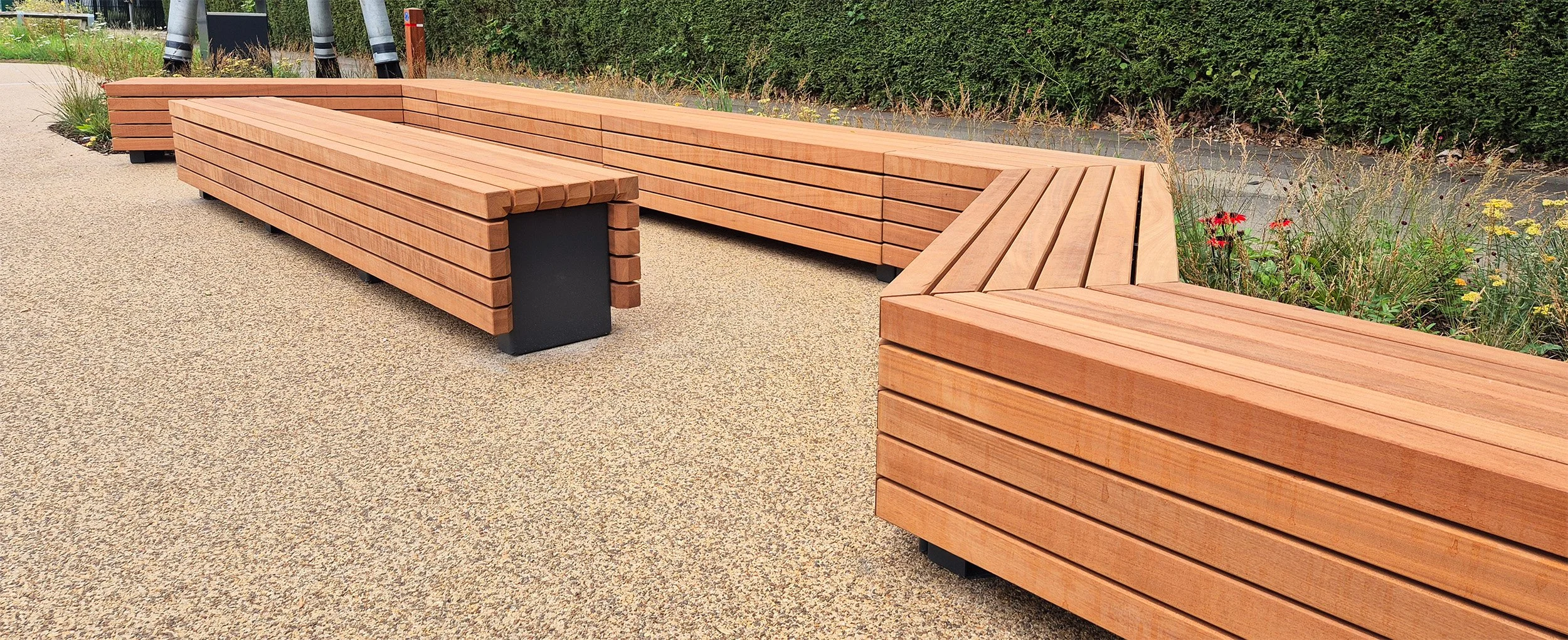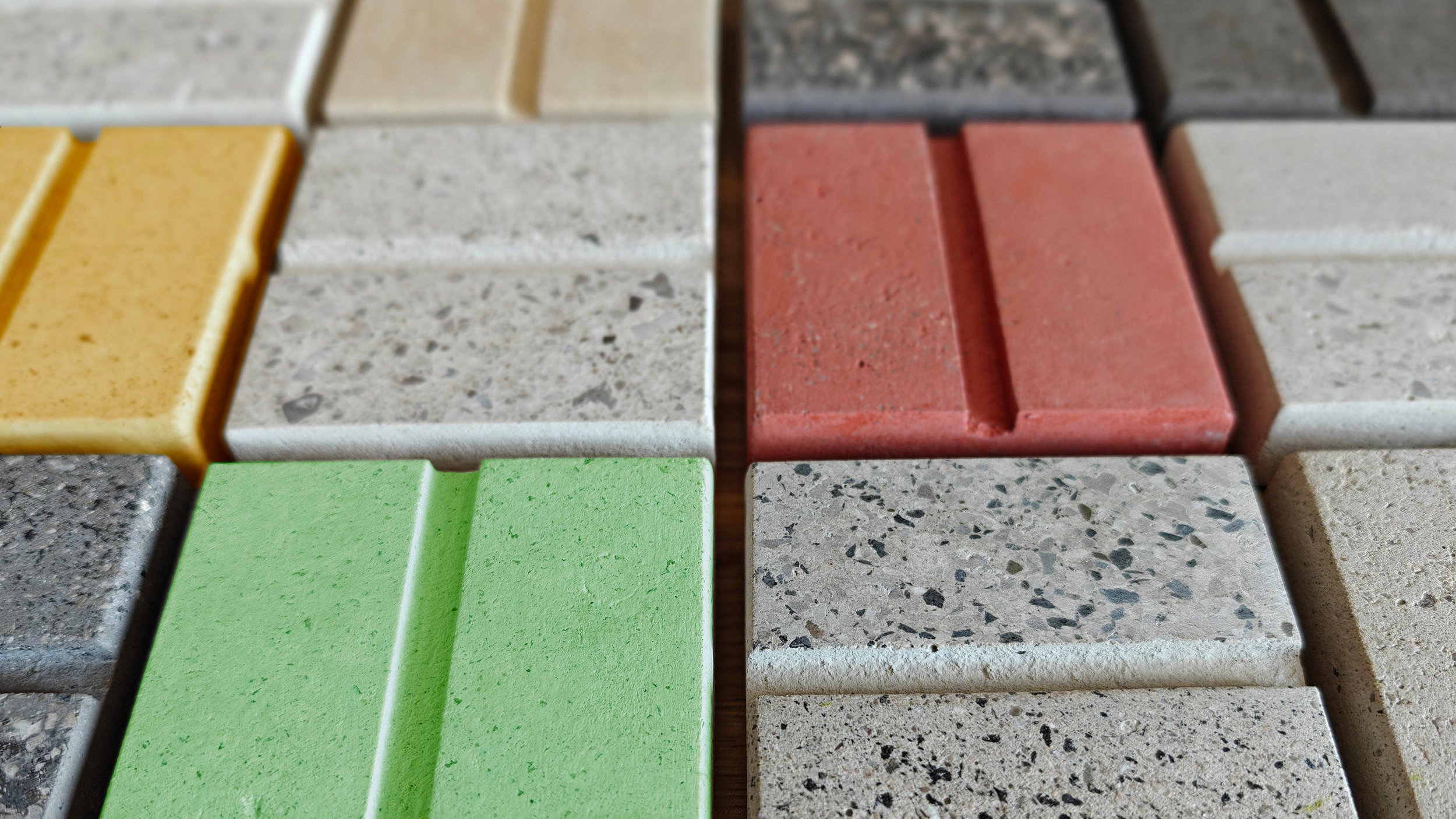
Materials + Finishes
home > Materials + Finishes
Materials + Finishes
We typically utilise a small range of materials in our standard collections for three reasons:
To maximise our understanding of performance and finish
To maintain control of our supply chain
To simplify our core offering
We do however have experience of many alternative materials and finishes in addition to those below. If your project has a specification that needs meeting we can both advise on suitability and, where appropriate, adapt our products to suit.
We haven’t gone into too much technical detail on the materials as we’re not metallurgists or lumberjacks, but we speak from experience and knowledge on appropriate usage and are always happy to get scientific when needed!
Click on the CUBES below to explore more:
Steel/Stainless
Aluminium
Weathering Steel
Concrete/Stone
Hardwood
Softwood

Aluminium
-
We try and use aluminium in place of steel as much as we possibly can. It is much lighter, resists corrosion and provides a far more suitable powder-coating surface than galvanised steel.
After Oxygen and Silicon, Aluminium is the most abundant mineable element and is 100% recyclable so why wouldn’t we use it more?
-
Polyester Powder Coating:
Our Aluminium products are typically polyester powder-coated but can also be anodised.
Aluminium can be a great option for a non-combustible timber alternative on our benches and other products, however remain aware that if powder-coated it is unlikely to pass an A1, BS EN 13501-1 inspection due to the coating’s calorific contribution. In these cases we can anodise any aluminium elements needing a coloured, or just a protective coating.
This ubiquitous surface coating provides a tough final coating in hundreds of RAL & BS colours, as well as many specialist finishes that can mimic weathering steel or stone.
-
Aluminium can be laser/water cut, cast, machined and machine-formed in numerous ways.
We typically work with aluminium sheet and plate materials as we can handle them very well in our factory and have a huge variation of design opportunities.
-

Steel
-
Steel is our industry’s go-to material when strength and form are required. We typically use steels where structural strength or vandal-resistance is important.
Although steel famously oxidises and degrades very easily, when properly treated and maintained there’s no reason why our steel products shouldn’t last upwards of 20 years.
All steel components are either hot-dip galvanised or zinc-primed, and then polyester powder-coated where colour and an extra layer of protection are required.
-
Galvanising:
Steel components can be hot-dip galvanised (HDG) to BS EN ISO: 1461 for an ultra-durable and corrosion resistant finish.
HDG is good for structural applications like canopy frames, and for below ground support and fixing hardware. We also utilise a large amount of pre-galvanised steel sheet in furniture and our Plantapanel products.
A disadvantage of HDG is that it requires an amount of labour to remove unwanted accumulated material, and can cause issues with further surface finishing due to fidelity of the surface or material off-gassing.
Zinc Phosphate Priming:
Applying this treatment prior to powder-coating allows for a much more uniform surface finish than HDG and although it is not quite as durable, it is more than sufficient for protecting street furniture under normal usage.
Polyester Powder Coating:
This ubiquitous surface coating provides a tough final coating in hundreds of RAL & BS colours, as well as many specialist finishes that can mimic weathering steel or stone.
-
Steel can be laser/water cut, machined and machine-formed in numerous ways.
We typically work with aluminium sheet and plate materials as we can handle them very well in our factory and have a huge variation of design opportunities.
-
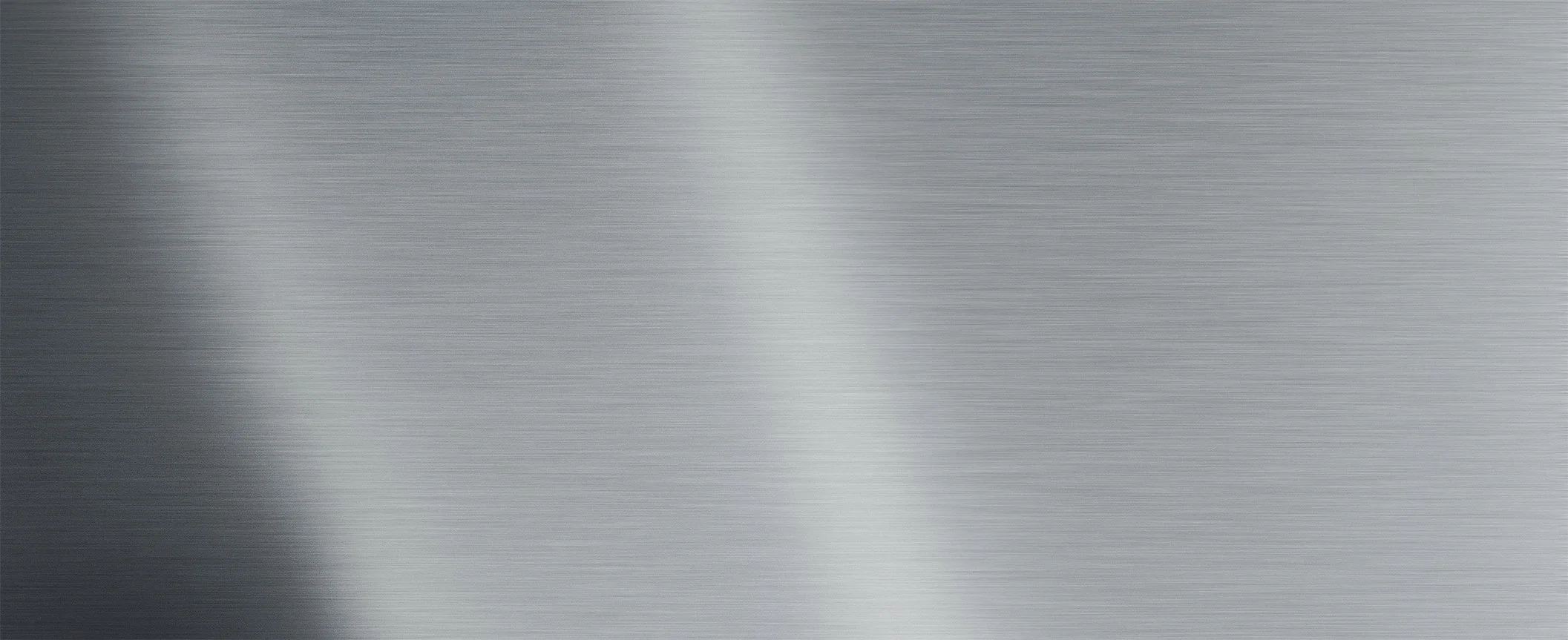
Stainless Steel
-
We can make most of our products in stainless steel where enhanced environmental resistance, or a premium finish is required.
Grade 304 is suitable for most street furniture applications however we would recommend increasing to grade 316 in coastal or other potentially corrosive environments. Litter bins may also benefit from a higher grade to minimise staining over time.
We can also use lower-grade stainless steels where colour coating is required but cost needs to be minimised.
-
Polishing:
Our stainless steel products are typically supplied with a 320 Grit brushed finish, but can be shot-blasted and bright polished too.
Colouring:
We can also thermally or chemically change the surface colour of stainless steel but the process can be unpredictable and the metallic nature of finish isn’t really in keeping with the product.
Powder Coating:
This ubiquitous surface coating provides a tough final coating in hundreds of RAL & BS colours, as well as many specialist finishes that can mimic weathering steel or stone. It is often considered a waste to powder coat stainless steel, as no finishes are needed to protect it, however we understand that even when applying a colour finish, the extra confidence in the longevity of the underlying material is important, especially for coastal or chemical-adjacent street furniture.
-
Stainless steel can be laser/water cut, machined and machine-formed in numerous ways.
We typically work with stainless steel sheet and plate materials as we can handle them very well in our factory and have a huge variation of design opportunities.
-

Weathering Steel
-
Commonly referred to by its now defunct trademark name ‘COR-TEN’, weathering steel develops a self-sealing oxide patina when exposed to moisture. This layer is cyclically renewed over time providing decades of weather resistance without the concern of structural failure.
-
Weathering Steel’s bright orange oxide finish is not for everyone but is equally complementary to both industrial and natural settings, and those where long-term maintenance may be difficult.
We get asked a lot about sealing of the surface once it has oxidised:
As above the forming of the patina is, and needs to be, a cyclic process. If you apply any sort of top coat to the oxide surface you inhibit the cycle and can actually accelerate unwanted rusting-through of the steel. You should allow the weathering steel to do its thing and design accordingly, including protection of any adjcent porous materials, and a drainage gap left between steel and finishes at ground level to avoid surface staining.Our products are typically delivered unoxidised as the process is weather dependent and we may not always have the outside storage capacity to hold the stock.
-
The majority of our products can be made using weathering steel to allow the design to fit more appropriately into more natural or industrial themed areas.
Weathering steel is typically more costly than carbon steel or aluminium, but may outlast both in function and style so it is a worthwhile investment.
Ensure that runoff and spattering of the oxide finish is accounted for in the design of the furniture and the surrounding landscape. It may not be a good idea, for example, to use weathering steel Plantapanel walls alongside white porcelain tiles. In these instances consider a textured powder-coated steel/aluminium.
-
While we do not specify weathering steel as standard on any of our products, it is a perfect material for our Plantapanel retaining walls and Mount seating collection

Hardwood
-
We commonly specify sapele, a readily available and robust tropical hardwood. It has an attractive reddish hue when milled, softening to a silvery grey when left exposed.
We also have extensive experience working with Iroko, Cumaru, Ekki and Oak, among others.
We always supply timber from managed forestry via a supply chain dedicated to FSC and/or PEFC sourcing, and can provide certification where required.
-
We do not stain or oil-treat our hardwood timbers for three main reasons:
Oil treatment can make recycling/repurposing difficult, and incineration dangerous.
Fast-drying industrial oil treatments are not healthy for our assembly staff due to heavy metal content and VOCs.
The beautiful, freshly-oiled appearance only lasts 2-6 months outside unless continuously re-oiled, which in our experience just doesn’t happen.
If an oil finish is a must we would typically use either Danish or Linseed oil, and can apply stains and paints where required.
-
All timber, soft or hard is incredibly versatile both in decorative and structural applications.
We use the majority of our timber for seating and bespoke works, but also for cladding of shelters and enclosures, litter bin shells and decorative bollards.
All timbers can be hand-worked through to 5-axis CNC milled. You tell us about the project and we’ll advise on what can be done!
-

Softwood
-
For softwood we like to use redwood for it’s great machinability, good surface finish and structural performance relative to its cost. We’re also very keen on Scandinavian slow-grown pine, but haven’t had the right opportunities to use it much. Fancy it?
We also have extensive experience working with Douglas Fir, Larch, Southern Yellow Pine and Cedar, among others.
Where possible we will use pre-treated softwoods to increase the product’s lifespan, but will apply a weather-resistant finish if not. Softwoods are also suitable for staining and painting.
-
We do not stain or oil-treat our hardwood timbers for three main reasons:
Oil treatment can make recycling/repurposing difficult, and incineration dangerous.
Fast-drying industrial oil treatments are not healthy for our assembly staff due to heavy metal content and VOCs.
The beautiful, freshly-oiled appearance only lasts 2-6 months outside unless continuously re-oiled, which in our experience just doesn’t happen.
If an oil finish is a must we would typically use either Danish or Linseed oil, and can apply stains and paints where required.
-
All timber, soft or hard is incredibly versatile both in decorative and structural applications.
We use the majority of our timber for seating and bespoke works, but also for cladding of shelters and enclosures, litter bin shells and decorative bollards.
All timbers can be hand-worked through to 5-axis CNC milled. You tell us about the project and we’ll advise on what can be done!
-
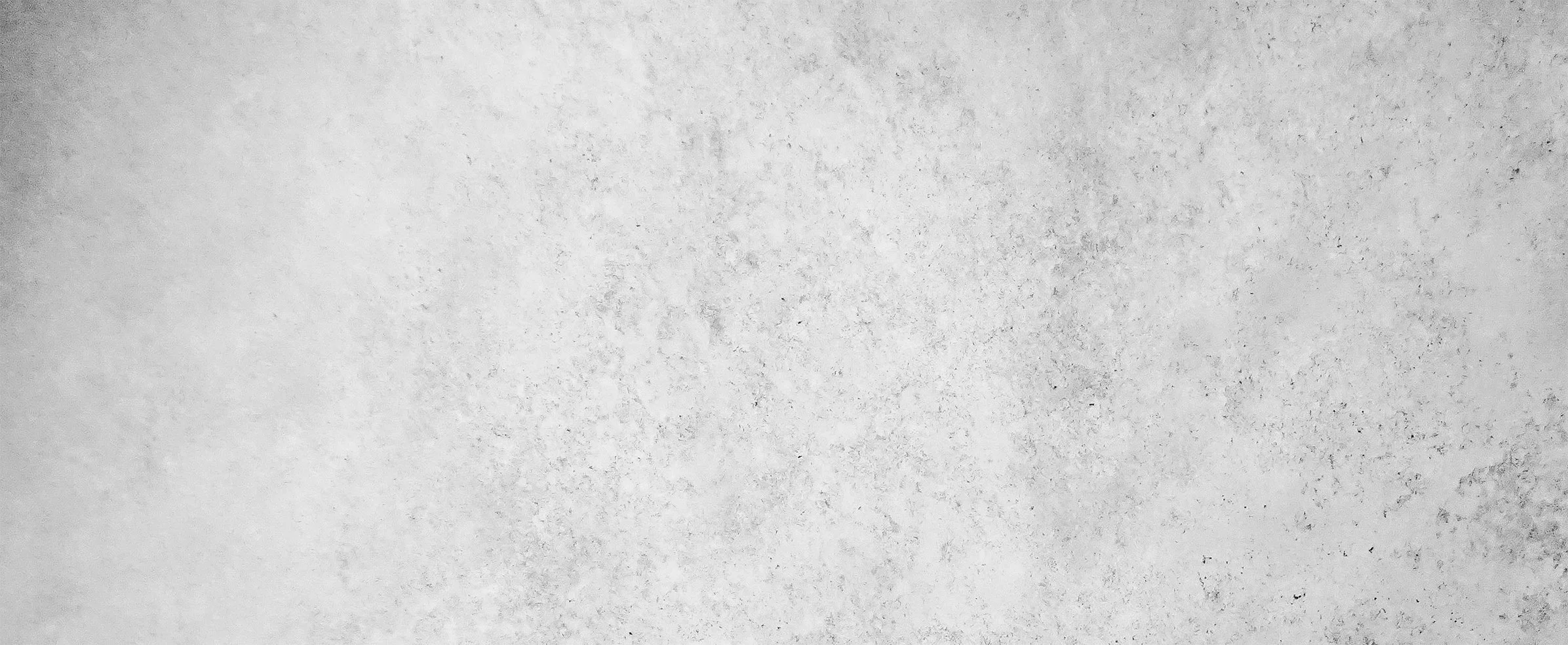
Concrete/Stone
-
Concrete:
A material with unlimited opportunities for form and finish. All items are cast in C40 grade concrete to achieve the best strength and highest quality finish. We can also supply items in High-Performance Concrete (HPC) where more delicate or lightweight forms are required.
Quarried Stone:
If granite or other quarried stone is what you need, we have an excellent supply chain to help us deliver across the board. Whether it’s hewn sandstone landscaping boulders or premium sawn and polished granite furniture, just give us the specification and we’ll do the rest.
-
Many coloured pigments are available, and we make sure these are evenly distributed throughout the entire mix, so if any damage or wear occurs, the concrete will retain its original colour rather than exposing plain grey concrete beneath. We commonly supply concrete in light grey, with an acid etched finish. Surfaces can also be treated to expose the aggregate or conversely highly polished on one or more faces.
Silicone forms can also be applied to the molds to achieve interesting textures such as , crinkled paper, ripples or geometric shapes. In fact you can imprint all sorts of patterns using anything from timber boards to fallen leaves (we don’t condone pulling leaves directly off living trees in the name of architecture.)
-
Concrete is limited mostly by imagination, but also by budget. We can design and cast anything from a bespoke bollard post to bespoke seating, walls, sculptures and more, with almost limitless size and complexity.
Concrete is a fantastic material in street furniture, especially where infrastructure protection, retaining ability or fire ratings are concerned.
-







